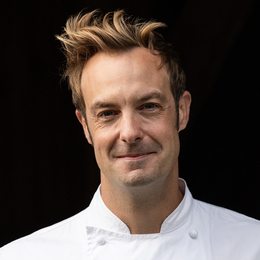Knowledge Base > Barton Seaver - Fat and Flavor

Barton Seaver - Fat and Flavor
This event was on
Thursday, September 29, 2022 at 11:00 am Pacific, 2:00 pm Eastern
Join Chef Barton Seaver to discuss the wide world of cooking and finishing oils (and butter, of course!). We’ll discuss strategies for making the most of this culinary staple and exp… Read More.
Question:

which oils are preferred for seafood, fish, beef... Which is for hottest to coolest cooking oils.?
— Sandi Hansen
Answer:
Let's talk for a minute about smoke points. I know that we had a question come in here to do. No, I can't find it. But I know there was a question about some smoke points and for that I would push you to. A wonderful resource that my colleague Katie brought up for me and this is from Sirius eats. And if you maybe Patrick could put this up there at the top of the queue Serious Eats. What's a smoke point? And why does it matter? And that link will bring you up to this handy little chart. So thanks to the serious eats folks for producing that so it shows you at what temperature that oil is going to start smoking and what in an oil smokes. Well, there's suspended particulate. There's you know, all sorts of different minerals and Just suspended things in there that after he's after he reaches a certain temperature those begin to burn. Once you get really passed that point. That's where you get that really bitter that very accurate nasty. When is it called acrylane is the chemical I think that's developed. Um, and that's where food just gets gross. Right? I mean just anything you cook in that is going to be tainted by that fully. So smoke point to me is a helpful measure most of the you know, sort of clarified like vegetable oils soil oil canola oil peanut oil vegetable oil. Those are gonna have the higher smoke points just because they're pure and those are good for if you are searing a steak if you are trying to cook something over very very high heat, but you know, what in my cooking I almost never actually do that. It's very rare that I try and kill something again. Only with stake or with something like that where I'm really trying to get a very rich sear on it. but even then I'll just add a very scant bit of this. So going down the list you have grapeseed oil. So up at the top you have rice oil you have safflower oil about 500 Degrees going down. You have the sort of clarified oils like this which typically around 450. And then lard is 370 avocado. 375 sesame oil 350 butter. Is it 350 an extra virgin olive oil is somewhere between 325 and 375. You can sear a steak at 375 degrees. Pretty effectively. So in my cooking this is almost exclusively what I use. Why do I have this around? Super super high heat things. Yes, but really mostly for making aioli. Yeah because aioli is a vegetable in our house. Yes, because it's delicious. So especially when you're making something like sauteed zucchini where you start off with garlic the whole lot of garlic more garlic than you use typically. Because everything should have more garlic in it says the garlic farmer. I start off with a garlic I add zucchini and really I'm not trying to sear the zucchini so much as I'm trying to just cook it to the point where it's juices begin to come out. I add salt to it to facilitate that process and get that moisture out faster. And then what I'm really doing is I'm sort of flavorfully steaming and sauteing but all the while sort of tossing it to really sort of emulsify those vegetable juices in with that olive oil so that you're creating a sauce as you cook the vegetables and it becomes this delightfully integrated thing. And therefore the quality of oil really matters because it is going to be an integral part of the flavor of your dish. So that's why I use almost exclusively olive oil.